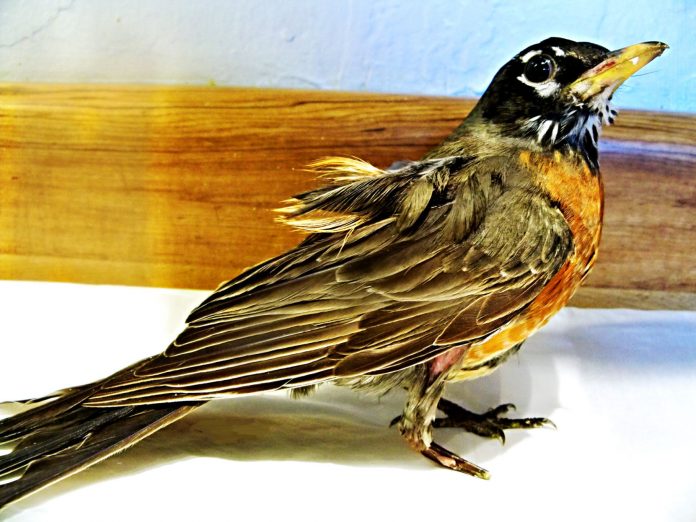Lions and tigers and kitty cats…oh my! I’m not embarrassed to call myself a wild and crazy cat lady. At the Wildlife Education and Rehabilitation Center, I’m crazy enough to dress up like a bobcat. I’ve transformed myself to become a feline “mommy”—suiting up in a full-body costume, deodorized with bobcat urine and placing a big, furry bobcat mask on my head. This technique was developed to make us as unlike a human as humanly possible and helps ensure that the bobcat kittens don’t become habituated to their human caretakers but will remain wild and wary of people when they’re released back to their native habitats.
At home, I’m kept amused by six spoiled, definitely un-wild cats who enjoy watching “cat-tv”—birds and squirrels noshing at the feeder, safely separated from the cats by a window. With tails a-twitching, ears flat back, rear ends wiggling, my cats can “satisfy” their predatory instincts to hunt.
On the other hand, I do realize that felines are natural-born assassins in fur coats. My own cats will stalk and kill spiders and flies in the house, but when domestic cats are allowed to roam outdoors, they effectively become an invasive species that has a devastating impact on native birds and other wildlife.
According to a recent study by the Smithsonian Conservation Biology Institute and the U.S. Fish and Wildlife Service, feral and outdoor pet cats kill from 1.4 billion to as many as 3.7 billion birds in the continental U.S. each year.
Only in Saturday morning cartoons will you see a wily little bird out-maneuver a cat, ala Sylvester and Tweety. In real life, our feathered friends stand little chance against a feline predator. Even if it does manage to escape claws and teeth, the bird may die from being traumatized or from injuries—even minor ones. A cat’s saliva may contain toxins and a tiny bite can be deadly to the bird.
A severely injured American robin is a victim of one such predator. It came to WERC in January, suffering from a mauling by a neighborhood cat. Its foot was hanging loose by a sliver of skin. The foot had been essentially amputated by the cat and we had to cut off the dead foot at the ankle. But a worse injury was found upon a fuller exam: the elbow of the left wing was very swollen and infected from the cat’s bite. We feared it was fractured. The robin was immediately put on a daily regimen of antibiotics and pain medications. In addition to its injuries, the bird was very thin and hungrily gobbled up lots of mealworms.
Though the prognosis for the robin remains iffy, we’re hoping the charming bird will eventually be able to perch with one foot, that the wing heals without permanent damage, and by springtime will be foraging for juicy earthworms, grasshoppers and grubs in a lawn and whistling that familiar song of spring—cheerily, cheer up, cheer up, cheerily, cheer up.










